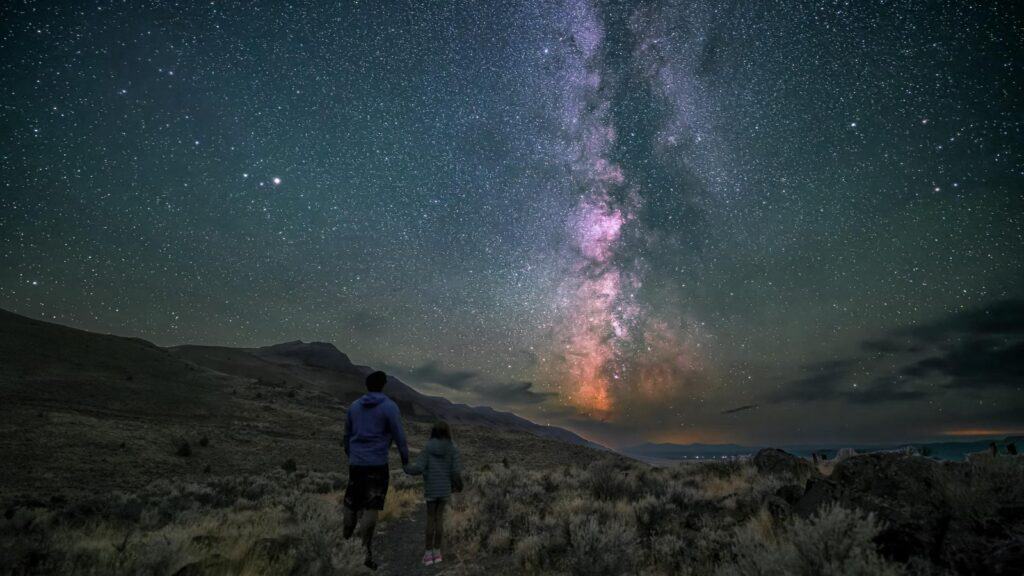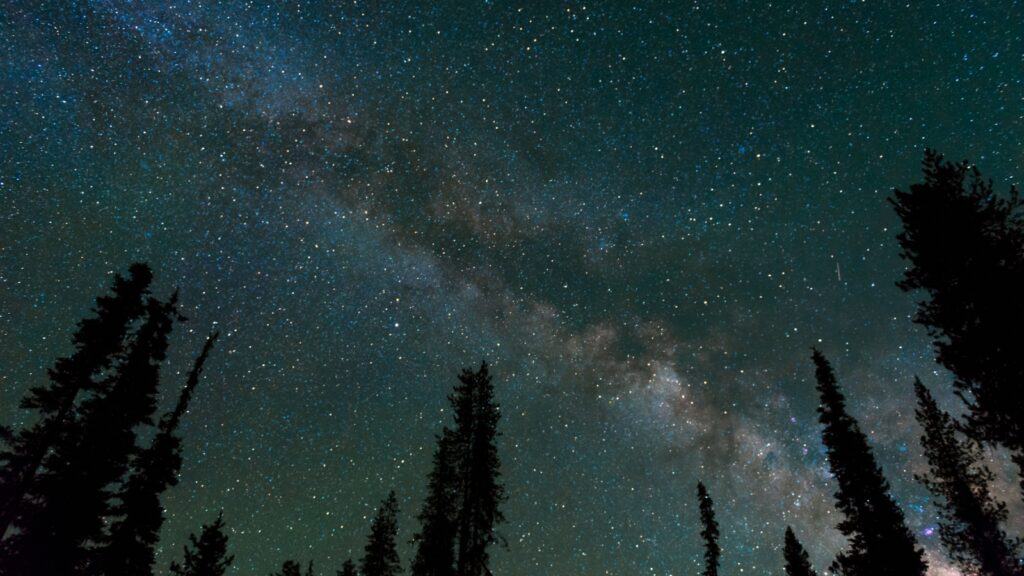Bucket List Item: Oregon Outback International Dark Sky Sanctuary
Hopefully all of you have had the experience of gazing into the night sky in dark surroundings, so that you could take advantage of the stars, planets and cosmos. Unfortunately, manmade lights often interfere – it is called light pollution for a reason – but did you know that the U.S. can now claim the largest international dark sky sanctuary? You will have to travel to Oregon to take advantage, but it is worth the trip.
What Is A Dark Sky Sanctuary?

According to DarkSky.org, they oversee 5 types of dark sky environments, with a sanctuary being the largest:
- Urban Night Sky Places: “A municipal park, open space, observing site, or other similar property near or surrounded by large urban environs, and whose planning and design actively promote an authentic nighttime experience in the midst of significant artificial light.”
- International Dark Sky Community: “A town, city, municipality, or other legally organized community that has shown exceptional dedication to the preservation of the night sky through the implementation and enforcement of a quality outdoor lighting ordinance, dark sky education, and citizen support of dark skies.”
- International Dark Sky Park: “Land possessing an exceptional or distinguished quality of starry nights and a nocturnal environment that is specifically protected for its scientific, natural, or educational value, its cultural heritage, and/or public enjoyment.”
- International Dark Sky Reserve: “A public or private land possessing an exceptional or distinguished quality of starry nights and nocturnal environment that is specifically protected for its scientific, natural, or educational value, its cultural heritage, and/or public enjoyment.”
- International Dark Sky Sanctuary: “Public or private land that has an exceptional or distinguished quality of starry nights and a nocturnal environment that is protected for its scientific, natural, or educational value, its cultural heritage, and/or public enjoyment.” Typically, much more remote than an International Dark Sky Reserve or Park.
The World Is Looking Towards Oregon

The Oregon Outback International Dark Sky Sanctuary (OOIDSS), is a celestial wonderland stretching across 2.5 million acres in the southeastern region of Oregon. In 2024, this remote expanse achieved a remarkable milestone by earning the title of the world’s largest dark sky sanctuary, captivating the imagination of stargazers and astronomy enthusiasts worldwide.
A Beacon of Celestial Beauty

Amidst the expansive wilderness of the Oregon Outback, the OOIDSS offers unparalleled opportunities for stargazing and astronomical observation. Certified by Dark Sky International, this sanctuary stands as a testament to the importance of preserving natural darkness and fostering appreciation for the wonders of the night sky.
Looking Up, Down and Around

Pristine dark skies, away from light pollution, allow not only exceptional star gazing, but also allow for observation of nocturnal wildlife and ecosystems sensitive to artificial lighting.
Exploring the Varied Terrain

The vast acreage is as varied as desert expanses to towering mountain ranges and verdant valleys, allowing for all kinds of exploration.
This area is situated in the northern reaches of the Basin and Range Province of the Western United States and referred to as the Oregon Outback. It is sparsely populated, exceedingly remote, and predominantly comprised of public lands.
Preserving The Native Flora & Fauna

Sagebrush scrub and abrupt variations in topography are hallmarks of this high desert region, which also include thermal springs.
Within this distinctive geological terrain lie crucial habitats for a diverse array of fauna, including American pronghorn, bighorn sheep, sage grouse, white-tailed jackrabbits, untamed horses, and migratory birds traversing the Pacific Flyway.
Additionally, the region holds cultural significance and hosts a 13,000-year-old human settlement site, as well as privately-owned rangelands, ranches, and extensive cattle herds.
Preserving Pristine Skies: A Commitment to Conservation

As the specter of light pollution looms ever larger, the preservation of pristine night skies becomes increasingly vital. Within the OOIDSS, efforts are underway to mitigate light pollution through the implementation of a comprehensive Lighting Management Plan (LMP), ensuring that future generations can continue to marvel at the splendor of the cosmos.
Plan A Visit

If you are an astronomer, photographer, or just someone who would like to experience this nocturnal haven, there are many ways to do so.
Southern Oregon travel guides lay out several approaches.
- You can camp out under the stars.
- Join an organized star-gazing party.
- Take a moonlit tour of the playa.
- There are arrangements for RVs as well.
When To Go

Here are some pointers to ensure an unforgettable experience:
- Optimal Timing: Aim for the New Moon phase or the surrounding 10-day window when the moon remains below the horizon for most of the night, maximizing visibility.
- Essential Gear: While many stars are visible to the naked eye, enhance your experience with binoculars or a compact telescope. Additionally, equip yourself with a red-light flashlight or headlamp to preserve your night vision.
- Bundle Up: Prepare for chilly nights, especially in the high desert terrain, by dressing in layers and bringing along a cozy blanket for added warmth.
- Stay Updated: Stay abreast of event schedules, weather forecasts, and valuable insights to enhance your sanctuary visit by checking our website regularly.
- Anticipate Limited Connectivity: Be prepared for patchy cell phone reception in the expansive Oregon Outback. Ensure you have a physical map on hand for navigation, available at the visitor center and forest service office, to navigate safely and fully enjoy your excursion.
Additional Nigh Sky Adventures

Did you know that there are over 70 dark sky chapters around the world? The image above is fromThe Wairarapa Dark Sky Reserve situated in the Wairarapa Valley of the North Island of New Zealand.
You can look up and join a chapter near you, become a volunteer to help preserve dark skies and educate against light pollution, in addition to finding places to enjoy the night sky.
Fighting Light Pollution Begins At Home

DarkSky groups also educate about how our own home lighting choices can affect the greater environment. They provide guides for self-assessment so that we can each do our part.
The Takeaway

Whether you’re a seasoned astronomer or a casual observer, areas dedicated to preserving the night sky offer myriad opportunities to connect with the cosmos, from witnessing meteor showers to marveling at the Milky Way, experiencing the magic of the night sky in its purest form.
You can also join organizations around the world and do your own part in fighting light pollution and educating the public.







